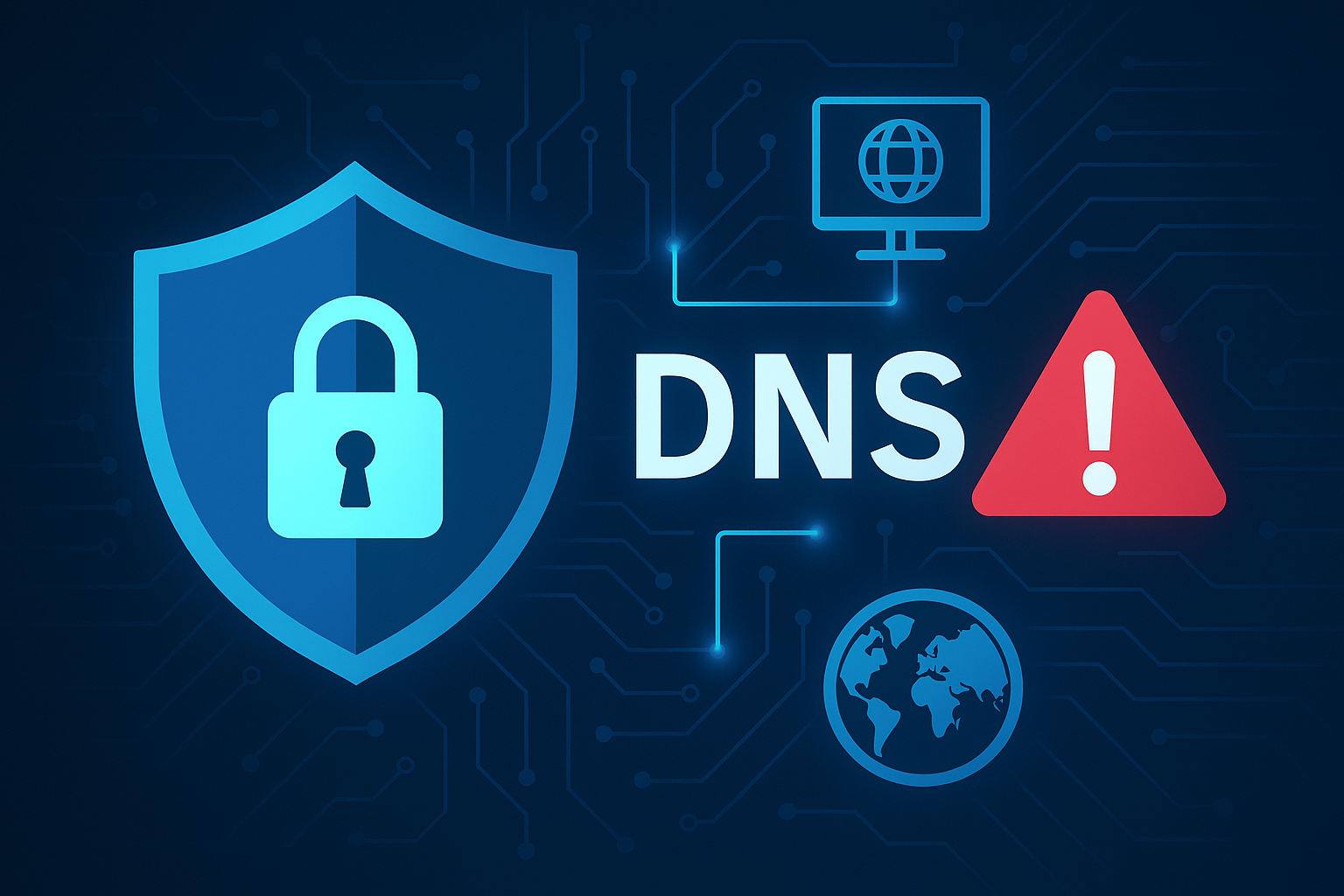
The Hidden Threat of Dangling DNS Records
Introduction: The Unseen Risk in DNS
DNS (Domain Name System) enables users reach applications and services. It translates human‑friendly names into the addresses computers use. If DNS records are not kept up to date, they can become a serious liability. One of the most overlooked issues is the presence of dangling DNS records.
A dangling DNS record is an entry that points to a resource that no longer exists or is no longer under your control. These records are not just clutter; they are a real security risk. Attackers actively look for them, and if they find one, they can hijack your subdomain, impersonate your services, capture cookies, and launch phishing or malware campaigns.
What Are Dangling DNS Records?
A dangling DNS record happens when a DNS entry, such as a CNAME or A record, continues to point to a cloud resource, server, or service that has been deleted or decommissioned. For example, if you once hosted a web app at app.example.com and later shut it down but forgot to remove the DNS record, that entry is now dangling.
Attackers can claim the unassigned resource, set up their own infrastructure, and suddenly your subdomain points to their system. This is known as subdomain takeover.
How Dangling DNS Records Become Attack Vectors
Here is a practical scenario:
- A developer creates a website hosted at
superapp01.websites.cloudprovider.com - Friendly DNS CNAME record
superapp.company.comis created, resolving tosuperapp01.websites.cloudprovider.com. - The website
superapp01.websites.cloudprovider.comis decommissioned, but its DNS record remains. - An attacker notices the DNS entry still points to a hosting platform.
- The attacker creates a new website in their own account, matching the original name
superapp01.websites.cloudprovider.com. - DNS record
superapp.company.comnow resolves to the attacker’s infrastructure, but under your organization’s domain.
Consequences:
Dangling DNS records are a clear example of how small oversights can lead to major security incidents. Attackers do not need to breach your firewall or guess passwords. They simply wait for you to leave a door open.
- Phishing: Attackers can serve fake login pages or malware using your trusted domain.
- Data Harvesting: Users or automated systems might continue to send data to the hijacked subdomain.
- Brand Damage: Customers and partners lose trust if your domain is used for malicious purposes.
- Regulatory Exposure: Breaches can trigger compliance failures and legal consequences.
Security researchers and bounty hunters regularly find and report these vulnerabilities.
Why Do Dangling DNS Records Happen?
Despite the risks, dangling DNS records are common. Reasons include:
- Manual Processes: DNS changes are often handled manually, making it easy to forget to clean up records.
- Lack of Ownership: In large organizations, it is not always clear who owns a DNS record.
- Poor Visibility: Application owners may not know which DNS records exist for their services.
- Disconnected Tools: DNS, cloud, and asset management systems are often not integrated.
How to Detect and Mitigate Dangling DNS Records
1. Build Visibility and Ownership
- Centralize DNS Inventory: Aggregate all DNS records across your organization, including those managed by different teams or hosting platforms.
- Map Records to Owners: Every DNS record should be linked to an accountable owner or application. Record this in an authoritative system of record.
2. Automate Detection
- Regular Scans: Use automated checks to verify that DNS records still point to active resources. For CNAMEs, confirm the target exists. For A records, confirm the IP is still assigned to your infrastructure.
- Integrate with Cloud and Asset Data: Cross‑reference DNS records with active resources from your cloud and configuration inventories to spot gaps quickly.
3. Enforce Lifecycle Management
- Tie DNS to Application Lifecycle: When an application is retired, review and remove its DNS records if they are no longer needed.
- Automate Deletion Requests: Embed DNS cleanup into decommissioning workflows so records are removed as part of the standard process.
4. Governance and Policy
- Establish Clear Policies: Define who can create, modify, and delete DNS records. Require authorization and validation for changes.
- DNS Record Expiry Policies: Implement policies that require periodic review and renewal of DNS records, especially for temporary or project-based resources.
- Periodic Attestation: Ask owners to confirm the accuracy and necessity of their DNS records on a regular cadence, with special focus on public‑facing entries.
5. Training and Awareness
- Educate Teams: Ensure everyone involved in deploying or decommissioning services understands the risks and their responsibilities.
- Promote a Security‑First Culture: Treat DNS hygiene as a core part of your cybersecurity posture, not a housekeeping task.
Moving From Manual Toil to Automation
Modern teams are adopting automated, application‑centric DNS management. By integrating DNS records into configuration management systems, automating compliance checks, and applying deterministic validation, it is possible to reduce the risk of dangling DNS records significantly.
However, technology alone is not enough. Success requires visibility, ownership, automation, and a culture of security awareness.
Dangling DNS records are a silent but serious threat. They are easy to overlook, yet the consequences can be severe. By taking a proactive and governance‑driven approach, organizations can close this gap and protect their users, data, and reputation.